Crocodile Species Around the World with their real Images
Crocodiles are large, fearsome reptiles that are known for their sharp teeth, powerful jaws, and strong tails. These animals have been around for millions of years, and there are over 20 different species of crocodiles in the world today. In this article, we’ll take a closer look at the different species of crocodiles and what makes each one unique.
In this article we will discuss
- Brief history of crocodiles
- Importance of crocodiles in the ecosystem
- What Makes Crocodile Species Unique?
- Conservation of Crocodile Species
- Interesting Facts About Crocodile Species
- The Different Species of Crocodiles
- Saltwater Crocodile
- Nile Crocodile
- American Crocodile
- American Alligator
- Marsh Crocodile
- Gharial
- Dwarf crocodile
- Freshwater crocodile
- New Guinea Crocodile
- West African Slender-Snouted Crocodile
- Siamese Crocodile
- Black Caiman
- Cuban Crocodile
- False Gharial
- Philippine Crocodile
- Spectacled Caiman
- Morelet’s Crocodile
- Orinoco Crocodile
- Cuvier’s Dwarf Caiman
- Chinese Alligator
- Smooth-fronted Caiman
- Yacare Caiman
- Broad-snouted Caiman
- West African crocodile
- Central African slender-snouted crocodile
- Mugger crocodile
Brief history of crocodiles
Crocodiles are one of the oldest and most fascinating creatures on earth. They are large, carnivorous reptiles that have been around for millions of years, surviving through the ages and adapting to the changing environment. With over 20 different species found in various parts of the world, crocodiles are known for their tough, scaly skin, powerful jaws, and sharp teeth, making them formidable predators in their habitats.
Crocodiles have a long history, dating back over 200 million years. Fossil records show that crocodiles have remained relatively unchanged in terms of their physical characteristics since the time of the dinosaurs. They are living examples of prehistoric creatures that have managed to survive and adapt over millions of years.
Importance of crocodiles in the ecosystem
Crocodiles play a crucial role in the ecosystem as top predators. They help regulate populations of other animals, including fish, birds, and mammals, by controlling their numbers and preventing overpopulation. Additionally, crocodiles are important scavengers, helping to clean up dead and decaying animals in their habitats. They are also culturally significant in some parts of the world, where they are revered as sacred animals or used for food and clothing.
However, despite their importance, crocodiles are facing numerous threats, including habitat loss, hunting, and pollution. As such, conservation efforts are needed to help protect and preserve these amazing animals for future generations. This article will delve deeper into the world of crocodiles, exploring their history, characteristics, and significance in the ecosystem.
What Makes Crocodile Species Unique?
Crocodile species are unique and differ from each other in several ways, including physical appearance, behavior, habitat, and diet. Understanding these differences is crucial for wildlife conservation and management efforts.
Differences in physical appearance
One of the most noticeable differences between crocodile species is their physical appearance. Some species are larger and more robust, while others are smaller and more slender. For example, the saltwater crocodile is the largest living crocodile species, with males growing up to 23 feet in length and weighing over a ton. In contrast, the dwarf crocodile is the smallest living crocodile species, growing only up to 5 feet in length. Additionally, different species have distinct coloration and patterning, ranging from olive-green to black and even white.
Differences in behavior
Crocodile species also exhibit differences in their behavior. Some species are more aggressive than others and have been known to attack humans. The Nile crocodile, for example, is responsible for more human deaths in Africa than any other large predator. In contrast, other species such as the Cuban crocodile are known to be more docile and less likely to attack. Additionally, crocodile species differ in their social behavior, with some being solitary while others form groups or pairs.
Differences in habitat
Crocodile species also occupy distinct habitats. Some species inhabit freshwater habitats such as rivers, lakes, and swamps, while others live in saltwater habitats such as mangrove swamps and estuaries. For example, the American crocodile is found in the brackish and saltwater habitats of the southern United States, Mexico, Central, and South America, while the freshwater crocodile is found in the freshwater habitats of Australia.
Differences in diet
Diet is another factor that distinguishes crocodile species from one another. While all crocodile species are carnivorous, their specific prey preferences can vary significantly. For example, the Siamese crocodile primarily feeds on fish and small mammals, while the saltwater crocodile preys on a variety of animals including fish, birds, and mammals. Additionally, some species are known to have more specialized diets, such as the black caiman which feeds primarily on fish, while others such as the Nile crocodile will eat almost anything.
In conclusion, the differences in physical appearance, behavior, habitat, and diet make each crocodile species unique. These differences are important to consider when implementing conservation measures to ensure the survival of these magnificent creatures.
Conservation of Crocodile Species
Crocodiles are an important part of the ecosystem and their survival is crucial for maintaining a balanced and healthy environment. However, many crocodile species are currently facing threats to their existence due to human activities and habitat loss. It is important to implement conservation efforts to protect these unique creatures.
Threats to crocodiles
Threats to crocodiles come from a variety of sources. One of the main threats is habitat loss due to human activities such as urbanization, agriculture, and dam construction. This leads to a reduction in suitable nesting sites and breeding areas for crocodiles. Another major threat is hunting for their skin, which is highly valued in the fashion industry. Climate change is also impacting crocodile populations by altering water levels and temperatures.
Conservation efforts
Conservation efforts for crocodiles involve a variety of strategies. One of the most important is the establishment of protected areas where crocodiles can live without disturbance. This can include national parks, wildlife reserves, and other protected areas. Crocodile farms have also been established to help reduce the pressure on wild populations. These farms breed crocodiles for their skin, meat, and other products, which reduces the need for hunting in the wild. Additionally, conservationists work to educate local communities about the importance of preserving crocodile species and how they can help protect them.
Importance of preserving crocodile species
Preserving crocodile species is important for several reasons. Crocodiles play a key role in maintaining the balance of the ecosystem by controlling populations of prey animals. They also help to keep waterways clean by consuming carrion and dead animals. Additionally, crocodile tourism is an important source of income for many communities, providing jobs and income for local people.
In conclusion, crocodiles are an important part of the ecosystem and their survival is crucial for maintaining a balanced and healthy environment. Threats to crocodiles come from human activities such as habitat loss and hunting. Conservation efforts such as protected areas, crocodile farms, and education programs can help to protect crocodile populations. Preserving crocodile species is important for maintaining a healthy environment and supporting local communities.
Interesting Facts About Crocodile Species
- Crocodiles can run at speeds of up to 20 miles per hour on land.
- Some species of crocodiles, such as the Nile crocodile, can live up to 70 years in the wild.
- Crocodiles are important to indigenous cultures in many parts of the world and are revered as sacred animals.
- Crocodiles have a nictitating membrane, or a third eyelid, that helps protect their eyes while underwater.
- The largest crocodile ever recorded was a saltwater crocodile named “Lolong,” measuring 20.24 feet long and weighing over 2,300 pounds.
- Some species of crocodiles, such as the American crocodile, are known to make vocalizations that sound like roars, grunts, and hisses.
- Crocodiles are ambush predators and often use stealth and camouflage to hunt their prey.
- Crocodile eggs are temperature-dependent, with the sex of the hatchlings being determined by the temperature at which the eggs are incubated.
- Crocodiles are apex predators and play an important role in regulating the populations of their prey species.
- Crocodiles have a complex social hierarchy, with dominant individuals establishing territories and mating rights.
The Different Species of Crocodiles
Saltwater Crocodile
The saltwater crocodile (Crocodylus porosus) is one of the largest and most formidable crocodile species, found primarily in the saltwater habitats of Southeast Asia and Australia. Here are some important facts about the saltwater crocodile:
Physical description
The saltwater crocodile is the largest living reptile, with males growing up to 6-7 meters (20-23 feet) in length and weighing over 1,000 kg (2,200 lbs). Females are smaller, growing up to 3-4 meters (10-13 feet) in length and weighing up to 400 kg (880 lbs). They have powerful jaws with sharp teeth, a tough and scaly skin, and a muscular tail that helps them move swiftly in the water.
Habitat
Saltwater crocodiles are found in the brackish and saltwater habitats of Southeast Asia and Australia, including rivers, estuaries, and coastal areas. They are known to be highly adaptable and can survive in a variety of environments, including freshwater and even open ocean waters.
Diet
Saltwater crocodiles are apex predators and feed on a variety of prey, including fish, birds, mammals, and other reptiles. They are known for their ability to take down large prey, such as water buffalo, and can go for long periods without food.
Behavior
Saltwater crocodiles are known for their aggressive behavior and can be extremely dangerous to humans. They are territorial and will defend their territories fiercely, using their powerful jaws and sharp teeth to attack anything that comes too close. During the breeding season, males can become particularly aggressive, engaging in territorial fights and courting females.
Conservation status
Saltwater crocodiles are listed as a species of least concern by the International Union for Conservation of Nature (IUCN), due to their large population and widespread distribution. However, they are still threatened by habitat loss, hunting, and human encroachment. Conservation efforts are needed to ensure the survival of these magnificent creatures, including habitat protection and regulation of hunting and poaching.
Nile Crocodile
The Nile crocodile (Crocodylus niloticus) is one of the largest freshwater crocodile species, found throughout much of sub-Saharan Africa. Here are some important facts about the Nile crocodile:
Physical description
The Nile crocodile is a large, powerful reptile, with males growing up to 6 meters (20 feet) in length and weighing up to 1,000 kg (2,200 lbs). Females are smaller, growing up to 3 meters (10 feet) in length and weighing up to 500 kg (1,100 lbs). They have a tough, armored skin, and powerful jaws with numerous sharp teeth.
Habitat
Nile crocodiles are found in a variety of freshwater habitats, including rivers, lakes, and swamps, throughout sub-Saharan Africa. They are known to be adaptable and can survive in both freshwater and brackish water.
Diet
Nile crocodiles are apex predators and feed on a variety of prey, including fish, birds, mammals, and other reptiles. They are known for their ability to take down large prey, such as antelopes and zebras.
Behavior
Nile crocodiles are known for their aggressive behavior and can be extremely dangerous to humans. They are territorial and will defend their territories fiercely, using their powerful jaws and sharp teeth to attack anything that comes too close. During the breeding season, males can become particularly aggressive, engaging in territorial fights and courting females.
Conservation status
Nile crocodiles are listed as a species of least concern by the International Union for Conservation of Nature (IUCN), due to their large population and widespread distribution. However, they are still threatened by habitat loss, hunting, and human encroachment. Conservation efforts are needed to ensure the survival of these magnificent creatures, including habitat protection and regulation of hunting and poaching.
American Crocodile
The American crocodile (Crocodylus acutus) is a large reptile found in parts of North, Central, and South America. Here are some important facts about the American crocodile:
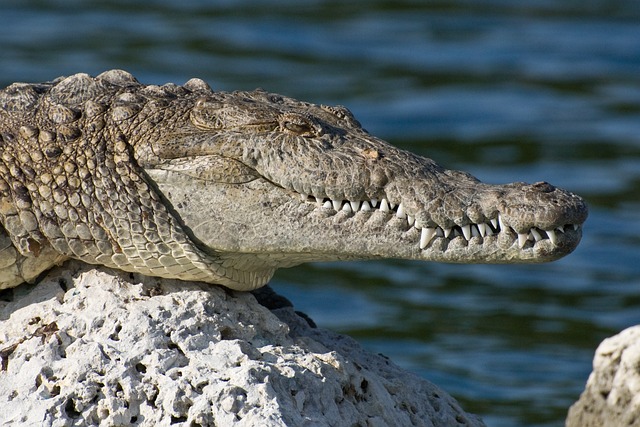
Physical description
The American crocodile is a large, powerful reptile, with males growing up to 5 meters (16 feet) in length and weighing up to 907 kg (2,000 lbs). Females are smaller, growing up to 3 meters (10 feet) in length and weighing up to 400 kg (880 lbs). They have a tough, armored skin, and powerful jaws with numerous sharp teeth. Unlike some other crocodile species, American crocodiles have a V-shaped snout.
Habitat
American crocodiles are found in a variety of freshwater and brackish water habitats, including rivers, estuaries, and mangrove swamps, throughout the Americas. They are known to be adaptable and can survive in both freshwater and saltwater.
Diet
American crocodiles are apex predators and feed on a variety of prey, including fish, birds, mammals, and other reptiles. They are also known to feed on carrion and will scavenge for food when necessary.
Behavior
American crocodiles are generally shy and elusive, and are not known for attacking humans. However, they can become aggressive if threatened or cornered. They are also territorial and will defend their territories if necessary.
Conservation status
American crocodiles are listed as a species of least concern by the International Union for Conservation of Nature (IUCN), due to their large population and widespread distribution. However, they are still threatened by habitat loss, hunting, and human encroachment. Conservation efforts are needed to ensure the survival of these magnificent creatures, including habitat protection and regulation of hunting and poaching.
American Alligator
The American alligator (Alligator mississippiensis) is a large reptile found in the southeastern United States, primarily in Florida and Louisiana. Here are some important facts about the American alligator:

Physical description
The American alligator is a large, heavy-bodied reptile, with males growing up to 4.5 meters (15 feet) in length and weighing up to 450 kg (1,000 lbs). Females are smaller, growing up to 3 meters (10 feet) in length and weighing up to 180 kg (400 lbs). They have a tough, armored skin, and powerful jaws with numerous sharp teeth. Unlike crocodiles, American alligators have a U-shaped snout.
Habitat
American alligators are found in a variety of freshwater habitats, including marshes, swamps, and rivers. They are also known to inhabit brackish water habitats.
Diet
American alligators are opportunistic feeders and will consume a variety of prey, including fish, birds, mammals, and other reptiles. They are also known to feed on carrion and will scavenge for food when necessary.
Behavior
American alligators are generally shy and will avoid humans if possible. However, they can become aggressive if they feel threatened or if their territory is encroached upon. They are also known for their distinctive bellowing call, which is used to establish territory and attract mates during breeding season.
Conservation status
American alligators were once listed as an endangered species due to overhunting and habitat loss. However, conservation efforts, including a ban on hunting and habitat restoration, have helped to increase their population, and they are now listed as a species of least concern by the International Union for Conservation of Nature (IUCN). However, continued conservation efforts are needed to ensure their long-term survival, as they still face threats from habitat loss and human encroachment.
Marsh Crocodile
The marsh crocodile (Crocodylus palustris) is a medium-sized crocodile found in parts of South Asia, including India, Pakistan, Nepal, and Sri Lanka. Here are some important facts about the marsh crocodile:

Physical description
The marsh crocodile is a medium-sized crocodile, with males growing up to 4 meters (13 feet) in length and weighing up to 350 kg (770 lbs). Females are smaller, growing up to 3 meters (10 feet) in length and weighing up to 200 kg (440 lbs). They have a rough, bumpy skin, and powerful jaws with numerous sharp teeth. They have a long, pointed snout with a V-shaped notch.
Habitat
Marsh crocodiles are found in a variety of freshwater habitats, including rivers, lakes, and marshes. They are also known to inhabit brackish water habitats.
Diet
Marsh crocodiles are opportunistic feeders and will consume a variety of prey, including fish, birds, mammals, and other reptiles. They are also known to feed on carrion and will scavenge for food when necessary.
Behavior
Marsh crocodiles are generally shy and will avoid humans if possible. However, they can become aggressive if they feel threatened or if their territory is encroached upon. They are also known for their distinctive bellowing call, which is used to establish territory and attract mates during breeding season.
Conservation status
Marsh crocodiles were once listed as a vulnerable species due to overhunting and habitat loss. However, conservation efforts, including a ban on hunting and habitat restoration, have helped to increase their population, and they are now listed as a species of least concern by the International Union for Conservation of Nature (IUCN). However, continued conservation efforts are needed to ensure their long-term survival, as they still face threats from habitat loss and human encroachment.
Gharial
The gharial (Gavialis gangeticus) is a critically endangered crocodile species that is native to the Indian subcontinent. Here are some important facts about the gharial:
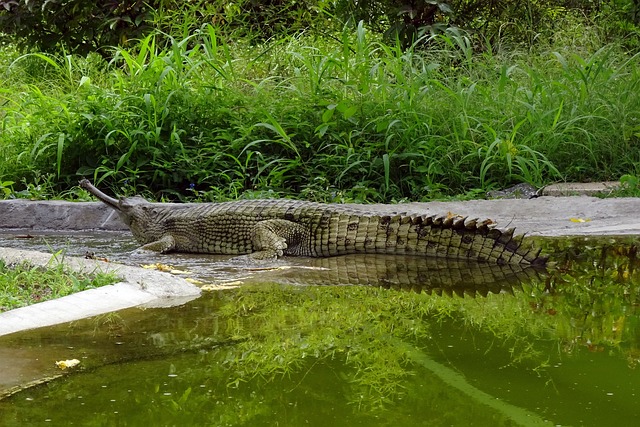
Physical description
The gharial is a slender crocodile with a long, narrow snout that is lined with numerous sharp teeth. Adult males can reach up to 6 meters (20 feet) in length and weigh up to 800 kg (1,764 lbs), while females are smaller, reaching up to 4 meters (13 feet) in length and weighing up to 250 kg (550 lbs). They have a distinctively long, thin snout with a bulbous growth at the end, which is used to make a distinctive buzzing noise during courtship displays.
Habitat
Gharials are found in the rivers of the Indian subcontinent, primarily in the Ganges and Brahmaputra river systems. They prefer deep pools with strong currents and sandbanks for basking in the sun.
Diet
Gharials are piscivorous, meaning they feed primarily on fish. Their long, narrow snout is well-suited for catching fish in the water, and they are capable of capturing prey with lightning-fast movements. They are also known to occasionally consume crustaceans and small mammals.
Behavior
Gharials are generally shy and avoid humans if possible. During breeding season, males will establish a territory and use their bulbous growth to attract females. They are also known for their distinctive hissing and buzzing vocalizations, which they use to communicate with each other.
Conservation status
The gharial is one of the most endangered crocodile species, with less than 1,000 individuals estimated to be remaining in the wild. They are listed as critically endangered by the International Union for Conservation of Nature (IUCN), and their population is declining due to habitat loss, overfishing, and pollution of their river habitats. Conservation efforts, including habitat restoration and captive breeding programs, are underway to help save the species from extinction.
Dwarf crocodile
The dwarf crocodile (Osteolaemus tetraspis) is a small crocodile species found in the forests and wetlands of West and Central Africa. Here are some important facts about the dwarf crocodile:
Physical description
The dwarf crocodile is the smallest living crocodile species, with adult males typically reaching 1.5 to 1.9 meters (4.9 to 6.2 feet) in length and weighing up to 75 kg (165 lbs), while females are slightly smaller. They have a short, broad snout with blunt teeth, and their body is covered in bony plates called osteoderms.
Habitat
Dwarf crocodiles are found in the forests, swamps, and wetlands of West and Central Africa, including countries such as Cameroon, Ghana, and Nigeria. They prefer slow-moving rivers, swamps, and forested pools, and are also known to inhabit rice paddies and other agricultural areas.
Diet
Dwarf crocodiles are opportunistic feeders and will consume a variety of prey, including fish, crustaceans, small mammals, and birds. They are also known to scavenge on carrion and will sometimes raid the nests of other reptiles to consume eggs.
Behavior
Dwarf crocodiles are primarily nocturnal and spend most of the day hidden in vegetation or submerged in water. They are generally shy and avoid humans, but will become aggressive if threatened. During the breeding season, males will establish territories and defend them against other males.
Conservation status
The dwarf crocodile is listed as vulnerable by the International Union for Conservation of Nature (IUCN), with their population declining due to habitat loss, overhunting for their meat and skin, and human-wildlife conflict. However, due to their secretive nature and habitat preferences, it is difficult to accurately estimate their population size. Conservation efforts, including habitat protection and awareness campaigns, are underway to help protect this unique and important species.
Freshwater crocodile
The freshwater crocodile (Crocodylus johnstoni) is a crocodile species found in Australia, Papua New Guinea, and Indonesia. Here are some important facts about the freshwater crocodile:
Physical description
The freshwater crocodile is a medium-sized crocodile, with adult males typically reaching 2.3 to 3 meters (7.5 to 9.8 feet) in length and weighing up to 200 kg (440 lbs), while females are smaller. They have a long, narrow snout with pointed teeth, and their body is covered in tough, scaly skin.
Habitat
Freshwater crocodiles are found in a variety of aquatic habitats, including rivers, lakes, and swamps, throughout northern and eastern Australia, as well as parts of Papua New Guinea and Indonesia. They are adapted to freshwater environments, but can also tolerate saltwater to some extent.
Diet
Freshwater crocodiles are carnivorous and primarily feed on fish, although they will also consume crustaceans, small mammals, and birds. They are known for their hunting strategy of remaining motionless in the water, waiting for prey to come close before quickly striking.
Behavior
Freshwater crocodiles are generally shy and avoid humans, but will become aggressive if threatened. They are primarily active during the day, but may also be active at night. During the breeding season, males will establish territories and defend them against other males.
Conservation status
The freshwater crocodile is listed as least concern by the International Union for Conservation of Nature (IUCN), with their population considered stable in most areas. However, localized declines have been observed due to habitat loss, hunting, and accidental drowning in fishing nets. Conservation efforts, including habitat protection and research, are underway to help ensure the continued survival of this species.
New Guinea Crocodile
The New Guinea crocodile (Crocodylus novaeguineae) is a crocodile species found on the island of New Guinea and nearby islands. Here are some important facts about the New Guinea crocodile:

Physical description
The New Guinea crocodile is a medium-sized crocodile, with adult males reaching up to 3.3 meters (10.8 feet) in length and weighing up to 250 kg (550 lbs), while females are smaller. They have a broad snout and robust body, covered in tough, scaly skin that is greenish-brown in color.
Habitat
New Guinea crocodiles are found in a variety of aquatic habitats, including rivers, lakes, and swamps, throughout the island of New Guinea and nearby islands. They are adapted to freshwater environments but can also tolerate saltwater to some extent.
Diet
New Guinea crocodiles are carnivorous and primarily feed on fish, although they will also consume crustaceans, small mammals, and birds. They are known for their hunting strategy of remaining motionless in the water, waiting for prey to come close before quickly striking.
Behavior
New Guinea crocodiles are generally shy and avoid humans, but will become aggressive if threatened. They are primarily active during the day, but may also be active at night. During the breeding season, males will establish territories and defend them against other males.
Conservation status
The New Guinea crocodile is listed as vulnerable by the International Union for Conservation of Nature (IUCN), with their population declining due to habitat loss and hunting. Despite conservation efforts, including habitat protection and captive breeding programs, the New Guinea crocodile remains threatened by these factors, as well as climate change and human encroachment on their habitats.
West African Slender-Snouted Crocodile
The West African Slender-Snouted Crocodile (Mecistops cataphractus) is a freshwater crocodile species found in West and Central Africa. Here are some important facts about the West African Slender-Snouted Crocodile:
Physical description
The West African Slender-Snouted Crocodile is a medium-sized crocodile, with adult males reaching up to 3 meters (9.8 feet) in length and weighing up to 130 kg (287 lbs), while females are smaller. They have a slender snout, with a bony ridge on the back of the head, and their skin is light brown to grey with dark spots.
Habitat
West African Slender-Snouted Crocodiles are found in rivers, streams, and swamps throughout West and Central Africa, from Senegal to Cameroon. They prefer freshwater habitats but can also be found in brackish water.
Diet
West African Slender-Snouted Crocodiles are primarily fish-eaters but will also consume crustaceans, mollusks, and amphibians. They are known for their hunting strategy of waiting motionless in the water and ambushing prey that comes close.
Behavior
West African Slender-Snouted Crocodiles are primarily active at night, although they may also be active during the day. They are generally shy and avoid humans but may become aggressive if threatened or provoked. During the breeding season, males will establish territories and defend them against other males.
Conservation status
The West African Slender-Snouted Crocodile is listed as critically endangered by the International Union for Conservation of Nature (IUCN), with their population declining due to habitat loss, hunting, and persecution. Despite conservation efforts, including habitat protection and captive breeding programs, the West African Slender-Snouted Crocodile remains threatened by these factors, as well as climate change and human encroachment on their habitats.
Siamese Crocodile
The Siamese Crocodile (Crocodylus siamensis) is a medium-sized freshwater crocodile species found in Southeast Asia. Here are some important facts about the Siamese Crocodile:
Physical description
The Siamese Crocodile is a relatively small crocodile, with adult males reaching up to 3 meters (9.8 feet) in length and weighing up to 150 kg (330 lbs), while females are smaller. They have a broad snout and a thick armor-like skin, which is light brown to grey with black bands.
Habitat
Siamese Crocodiles are found in freshwater habitats such as rivers, lakes, and marshes in Southeast Asia, including Cambodia, Indonesia, Malaysia, Thailand, and Vietnam.
Diet
Siamese Crocodiles are opportunistic predators, feeding on a variety of prey including fish, frogs, birds, small mammals, and reptiles. They are known for their hunting strategy of stalking prey in the water and ambushing them.
Behavior
Siamese Crocodiles are generally shy and avoid humans, but can become aggressive if provoked or threatened. They are primarily active during the day and rest at night. During the breeding season, males will establish territories and defend them against other males.
Conservation status
The Siamese Crocodile is listed as critically endangered by the International Union for Conservation of Nature (IUCN), with their population declining due to habitat loss, hunting, and persecution. They are also threatened by the hybridization with saltwater crocodiles, which can reduce genetic diversity and weaken the species’ resilience. Conservation efforts, including habitat protection and captive breeding programs, have been implemented to save the Siamese Crocodile from extinction.
Black Caiman
The Black Caiman (Melanosuchus niger) is a large, carnivorous crocodilian species found in the Amazon Basin of South America. Here are some important facts about the Black Caiman:

Physical description
The Black Caiman is the largest predator in the Amazon Basin, with adult males reaching up to 5 meters (16.4 feet) in length and weighing up to 400 kg (880 lbs), while females are smaller. They have a broad, triangular snout and dark, bumpy skin, which is black or dark brown in color.
Habitat
Black Caimans are found in a variety of freshwater habitats, including rivers, lakes, and swamps in the Amazon Basin, from Colombia to Brazil.
Diet
Black Caimans are opportunistic predators, feeding on a variety of prey including fish, turtles, birds, mammals, and other reptiles. They are known for their powerful jaws and hunting strategy of stalking prey in the water and dragging them under.
Behavior
Black Caimans are generally nocturnal and are more active at night. They are also known to bask in the sun during the day. During the breeding season, males will establish territories and defend them against other males.
Conservation status
The Black Caiman is listed as least concern by the International Union for Conservation of Nature (IUCN), with stable populations throughout its range. However, they are threatened by habitat loss, hunting, and persecution. Conservation efforts, including habitat protection and regulated hunting, have been implemented to maintain their population and ensure their survival.
Cuban Crocodile
The Cuban Crocodile (Crocodylus rhombifer) is a medium-sized, critically endangered crocodilian species native to Cuba. Here are some important facts about the Cuban Crocodile:

Physical description
The Cuban Crocodile is a medium-sized crocodilian, with adult males reaching up to 3 meters (9.8 feet) in length and weighing up to 160 kg (350 lbs), while females are smaller. They have a broad, triangular snout, bony ridges above the eyes, and scales on their neck that form a distinctive pattern of raised, diamond-shaped scales.
Habitat
The Cuban Crocodile is found in a variety of freshwater habitats, including swamps, rivers, and lakes in Cuba’s wetlands and coastal regions.
Diet
Cuban Crocodiles are opportunistic predators, feeding on a variety of prey including fish, crustaceans, birds, and mammals. They are known for their hunting strategy of lying in wait near the water’s edge and ambushing their prey.
Behavior
Cuban Crocodiles are more terrestrial than other crocodilian species, and are known to climb trees and bask in the sun during the day. During the breeding season, males will establish territories and defend them against other males.
Conservation status
The Cuban Crocodile is critically endangered, with only an estimated 3,000 individuals remaining in the wild. They are threatened by habitat loss, hunting, and hybridization with the American Crocodile, which has been introduced to Cuba. Conservation efforts, including habitat protection, captive breeding, and education and outreach programs, have been implemented to conserve and restore their population.
False Gharial
The False Gharial (Tomistoma schlegelii) is a crocodilian species found in Southeast Asia. Here are some important facts about the False Gharial:
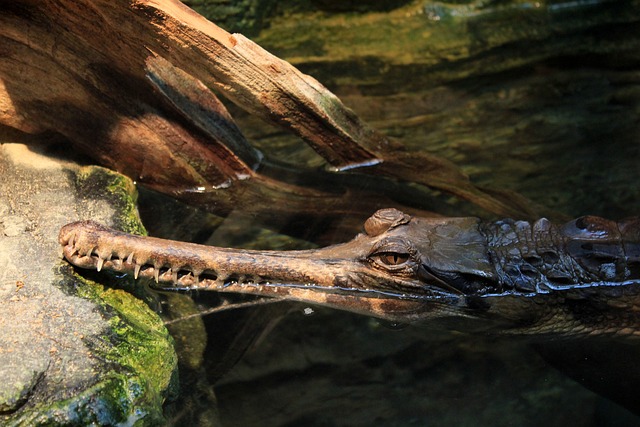
Physical description
The False Gharial has a long, slender snout with a distinctive bulbous protrusion on the tip. It can reach up to 5 meters (16.4 feet) in length and weigh up to 500 kg (1,100 lbs). It has a greyish-brown body with irregular black stripes along its back and tail.
Habitat
The False Gharial inhabits rivers and lakes in Southeast Asia, including Malaysia, Indonesia, and Thailand. They prefer slow-moving, shallow waters with plenty of vegetation.
Diet
The False Gharial is an opportunistic predator, feeding on a variety of prey including fish, reptiles, and mammals. They are also known to feed on carrion and will scavenge for food.
Behavior
The False Gharial is a relatively docile crocodilian species and is not known to be aggressive towards humans. They are social animals and can often be found basking in groups along riverbanks. During the breeding season, males will establish territories and defend them against other males.
Conservation status
The False Gharial is listed as vulnerable by the International Union for Conservation of Nature (IUCN) due to habitat loss, hunting, and overfishing. Conservation efforts, including habitat protection, captive breeding, and education and outreach programs, have been implemented to conserve and restore their population.
Philippine Crocodile
The Philippine Crocodile (Crocodylus mindorensis) is a freshwater crocodilian species found only in the Philippines. Here are some important facts about the Philippine Crocodile:
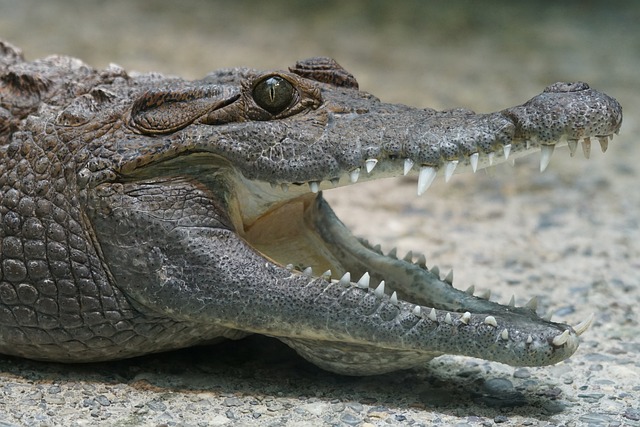
Physical description
The Philippine Crocodile is a small to medium-sized crocodilian species, growing up to 3 meters (10 feet) in length. They have a broad snout and a bony ridge running down the length of their back. They have a dark brown to olive-green body with irregular black bands along their tail.
Habitat
The Philippine Crocodile inhabits freshwater habitats, including rivers, swamps, and marshes, on the islands of Luzon, Mindoro, and Palawan in the Philippines.
Diet
The Philippine Crocodile is an opportunistic predator, feeding on a variety of prey including fish, frogs, snakes, birds, and small mammals.
Behavior
The Philippine Crocodile is a relatively docile crocodilian species and is not known to be aggressive towards humans. They are also known to be shy and elusive, making them difficult to study and conserve.
Conservation status
The Philippine Crocodile is listed as critically endangered by the International Union for Conservation of Nature (IUCN) due to habitat loss, hunting, and overfishing. Only a few hundred individuals are estimated to remain in the wild, and conservation efforts, including habitat protection, captive breeding, and education and outreach programs, are being implemented to conserve and restore their population.
Spectacled Caiman
The Spectacled Caiman (Caiman crocodilus) is a crocodilian species found in Central and South America. Here are some important facts about the Spectacled Caiman:
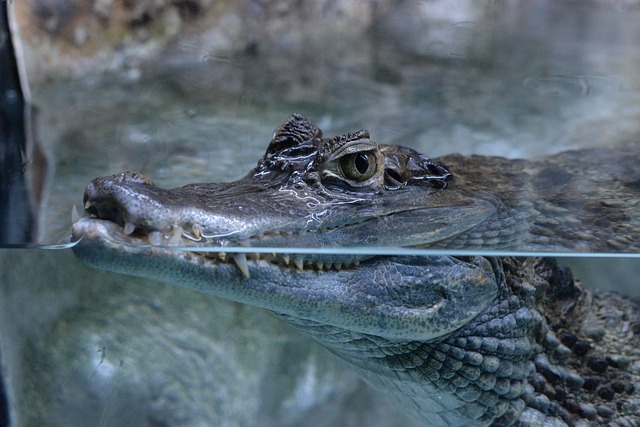
Physical description
The Spectacled Caiman is a medium-sized crocodilian species, growing up to 2.5 meters (8 feet) in length. They have a broad snout and bony plates on their back that form a distinct pattern resembling glasses or spectacles. They have a grayish-brown body with dark bands along their tail.
Habitat
The Spectacled Caiman inhabits a variety of freshwater habitats, including rivers, swamps, and lakes, in Central and South America.
Diet
The Spectacled Caiman is an opportunistic predator, feeding on a variety of prey including fish, birds, and small mammals.
Behavior
The Spectacled Caiman is a social crocodilian species and is often found in groups called basks. They are also known to be territorial and can be aggressive towards other crocodilian species and intruders.
Conservation status
The Spectacled Caiman is listed as least concern by the International Union for Conservation of Nature (IUCN) due to their relatively stable population and wide distribution. However, they are still subject to habitat loss and hunting in some areas, and conservation efforts, including habitat protection and regulation of hunting, are being implemented to ensure their continued survival.
Morelet’s Crocodile
Morelet’s Crocodile (Crocodylus moreletii) is a crocodilian species found in Mexico, Belize, and Guatemala. Here are some important facts about Morelet’s Crocodile:

Physical description
Morelet’s Crocodile is a medium-sized crocodilian species, growing up to 3 meters (10 feet) in length. They have a broad snout with bony ridges, and their skin is usually grayish-brown with dark spots or stripes. Their belly is yellowish in color.
Habitat
Morelet’s Crocodile inhabits freshwater habitats, including rivers, swamps, and ponds, in Mexico, Belize, and Guatemala.
Diet
Morelet’s Crocodile is an opportunistic predator, feeding on a variety of prey including fish, birds, and small mammals.
Behavior
Morelet’s Crocodile is generally a solitary species and is active both during the day and at night. They are known to be relatively docile towards humans and other animals, but can become aggressive if threatened.
Conservation status
Morelet’s Crocodile is listed as vulnerable by the International Union for Conservation of Nature (IUCN) due to habitat loss, hunting, and other human activities. Conservation efforts, including habitat protection and regulation of hunting, are being implemented to ensure their continued survival.
Orinoco Crocodile
The Orinoco crocodile (Crocodylus intermedius) is a critically endangered crocodilian species found in the Orinoco River and its tributaries in Colombia and Venezuela. Here are some important facts about the Orinoco crocodile:

Physical description
The Orinoco crocodile is a large species, with males growing up to 6 meters (20 feet) in length and weighing over 600 kg (1300 pounds). They have a broad, triangular snout with a bony ridge and their skin is usually grayish-brown with dark spots or stripes.
Habitat
The Orinoco crocodile inhabits freshwater habitats, including rivers, swamps, and lakes, in the Orinoco River basin in Colombia and Venezuela.
Diet
The Orinoco crocodile is an apex predator, feeding on a variety of prey including fish, turtles, and other smaller animals.
Behavior
The Orinoco crocodile is generally a solitary species and is active both during the day and at night. They are known to be aggressive towards humans and other animals, especially during the breeding season.
Conservation status
The Orinoco crocodile is listed as critically endangered by the International Union for Conservation of Nature (IUCN) due to habitat loss, hunting, and other human activities. Conservation efforts, including captive breeding and reintroduction programs, are being implemented to ensure their continued survival.
Cuvier’s Dwarf Caiman
Cuvier’s dwarf caiman (Paleosuchus palpebrosus) is a small crocodilian species found in the Amazon Basin in South America. Here are some important facts about the Cuvier’s dwarf caiman:
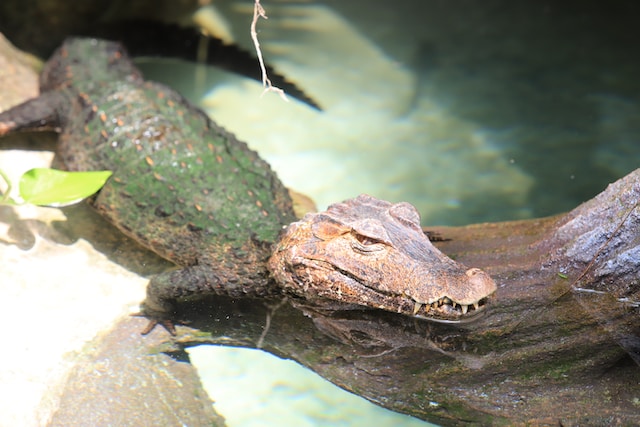
Physical description
Cuvier’s dwarf caiman is a small species, with males reaching up to 1.6 meters (5.2 feet) in length and females slightly smaller. They have a broad, flattened snout and their skin is usually dark brown with scattered lighter spots.
Habitat
Cuvier’s dwarf caiman inhabits freshwater habitats such as rivers, swamps, and marshes, in the Amazon Basin in South America.
Diet
Cuvier’s dwarf caiman is an opportunistic predator, feeding on a variety of prey including fish, crustaceans, and other small animals.
Behavior
Cuvier’s dwarf caiman is primarily nocturnal and spends most of their time in or near the water. They are known to be territorial and will defend their territory against other crocodilians and animals.
Conservation status
The Cuvier’s dwarf caiman is listed as least concern by the International Union for Conservation of Nature (IUCN) due to their wide distribution and relatively stable population. However, they are threatened by habitat loss, hunting, and the pet trade. Conservation efforts, including education and enforcement of hunting regulations, are needed to ensure their continued survival.
Chinese Alligator
The Chinese alligator (Alligator sinensis) is a small, freshwater crocodilian species that is native to eastern China. Here are some important facts about the Chinese alligator:

Physical description
The Chinese alligator is a small crocodilian, with adults typically reaching between 1.5 to 2 meters (4.9 to 6.6 feet) in length. They have a broad, rounded snout and a heavily armored body. Their skin is gray or brown in color, with irregular dark stripes.
Habitat
The Chinese alligator is found in slow-moving freshwater habitats such as streams, ponds, and marshes in the lower Yangtze River basin in eastern China.
Diet
The Chinese alligator is an opportunistic predator, feeding on a variety of prey including fish, amphibians, and small mammals.
Behavior
The Chinese alligator is primarily nocturnal and spends most of their time in or near the water. They are known to be shy and elusive, and will often flee if approached by humans. They are also capable of burrowing into the muddy banks of rivers and streams.
Conservation status
The Chinese alligator is critically endangered, with fewer than 200 individuals remaining in the wild. They are threatened by habitat loss, hunting, and the pet trade. Conservation efforts, including captive breeding and reintroduction programs, are ongoing to try to save this species from extinction.
Smooth-fronted Caiman
The smooth-fronted caiman (Paleosuchus trigonatus) is a small, freshwater crocodilian species found in South America. Here are some important facts about the smooth-fronted caiman:
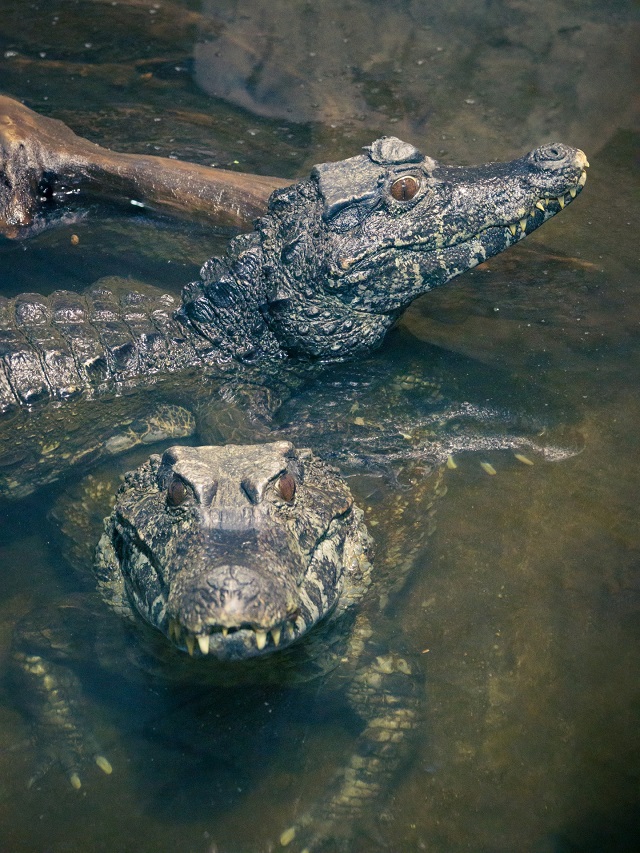
Physical description
The smooth-fronted caiman is a small crocodilian, with adults typically reaching between 1 to 1.5 meters (3.3 to 4.9 feet) in length. They have a broad, rounded snout and a heavily armored body. Their skin is brown or gray in color, with irregular dark bands.
Habitat
The smooth-fronted caiman is found in slow-moving freshwater habitats such as streams, rivers, and flooded forests throughout the Amazon basin and the Guianas.
Diet
The smooth-fronted caiman is an opportunistic predator, feeding on a variety of prey including fish, amphibians, reptiles, and small mammals.
Behavior
The smooth-fronted caiman is primarily nocturnal and spends most of their time in or near the water. They are known to be shy and elusive, and will often flee if approached by humans. They are also capable of burrowing into the muddy banks of rivers and streams.
Conservation status
The smooth-fronted caiman is classified as a species of least concern by the International Union for Conservation of Nature (IUCN), although some populations may be declining due to habitat loss and hunting. However, they are still widely distributed and not facing major threats at this time.
Yacare Caiman
The yacare caiman (Caiman yacare) is a species of crocodilian found primarily in South America. Here are some important facts about the yacare caiman:

Physical description
The yacare caiman is a medium-sized crocodilian, with adults typically reaching between 2.5 to 3 meters (8.2 to 9.8 feet) in length. They have a broad, flattened snout and a heavily armored body. Their skin is brown or olive green in color, with irregular dark bands or spots.
Habitat
The yacare caiman is found in a variety of freshwater habitats including rivers, lakes, and swamps throughout much of South America, including Brazil, Paraguay, Bolivia, and Argentina.
Diet
The yacare caiman is an opportunistic predator, feeding on a variety of prey including fish, amphibians, reptiles, birds, and small mammals.
Behavior
The yacare caiman is primarily active during the day and spends most of their time in or near the water. They are known to be aggressive and will readily attack humans if provoked. They are also capable of burrowing into the muddy banks of rivers and streams.
Conservation status
The yacare caiman is classified as a species of least concern by the International Union for Conservation of Nature (IUCN), although some populations may be declining due to habitat loss and hunting. However, they are still widely distributed and not facing major threats at this time. Conservation efforts have been focused on regulating hunting and protecting key habitats.
Broad-snouted Caiman
The broad-snouted caiman (Caiman latirostris) is a species of crocodilian found primarily in South America. Here are some important facts about the broad-snouted caiman:
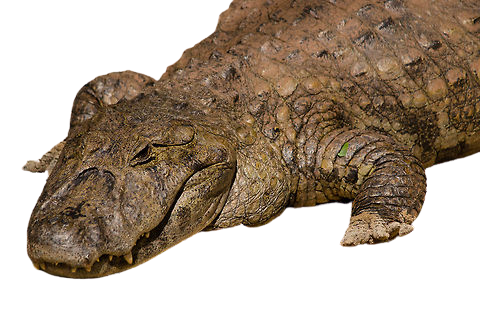
Physical description
The broad-snouted caiman is a medium-sized crocodilian, with adults typically reaching between 2 to 2.5 meters (6.6 to 8.2 feet) in length. They have a broad, flattened snout and a heavily armored body. Their skin is brown or olive green in color, with irregular dark bands or spots.
Habitat
The broad-snouted caiman is found in a variety of freshwater habitats including rivers, lakes, and swamps throughout much of South America, including Brazil, Paraguay, Uruguay, and Argentina.
Diet
The broad-snouted caiman is an opportunistic predator, feeding on a variety of prey including fish, amphibians, reptiles, birds, and small mammals.
Behavior
The broad-snouted caiman is primarily active during the day and spends most of their time in or near the water. They are known to be aggressive and will readily attack humans if provoked. They are also capable of burrowing into the muddy banks of rivers and streams.
Conservation status
The broad-snouted caiman is classified as a species of least concern by the International Union for Conservation of Nature (IUCN), although some populations may be declining due to habitat loss and hunting. However, they are still widely distributed and not facing major threats at this time. Conservation efforts have been focused on regulating hunting and protecting key habitats.
West African crocodile
The West African crocodile (Crocodylus suchus) is a species of crocodilian found primarily in West and North Africa. Here are some important facts about the West African crocodile:

Physical description
The West African crocodile is a medium-sized crocodilian, with adults typically reaching between 2.5 to 4 meters (8.2 to 13.1 feet) in length. They have a long, pointed snout and a heavily armored body. Their skin is gray or brown in color, with dark, irregular spots.
Habitat
The West African crocodile is found in a variety of freshwater habitats including rivers, lakes, and swamps throughout much of West and North Africa, including Senegal, Mali, Mauritania, Chad, and Egypt.
Diet
The West African crocodile is an opportunistic predator, feeding on a variety of prey including fish, birds, and mammals. They are known to be able to take down prey as large as antelopes and zebras.
Behavior
The West African crocodile is primarily active at night and spends most of their time in or near the water. They are known to be shy and avoid human contact whenever possible. However, they are still capable of attacking humans if provoked or surprised.
Conservation status
The West African crocodile is classified as a species of least concern by the International Union for Conservation of Nature (IUCN). However, some populations may be declining due to habitat loss and hunting. Conservation efforts have been focused on regulating hunting and protecting key habitats.
Central African slender-snouted crocodile

The Central African slender-snouted crocodile (Mecistops leptorhynchus) is a freshwater crocodile species found in Central and West Africa, primarily in the rivers of Cameroon, Chad, Central African Republic, and Congo. It is one of the smallest crocodile species, with adults usually measuring between 2.5 to 3 meters in length.
Physical description
The Central African slender-snouted crocodile has a slender snout, which distinguishes it from other crocodile species. It has a uniform gray-brown coloration, with a slightly lighter underbelly. The species is relatively small in size, with males growing up to 3 meters in length and weighing up to 120 kilograms, while females are slightly smaller.
Habitat
Central African slender-snouted crocodiles inhabit freshwater habitats such as rivers, streams, and lakes. They can be found in a variety of habitats ranging from rainforests to savannas, as long as there is water available.
Diet
The diet of the Central African slender-snouted crocodile consists mainly of fish, crustaceans, and mollusks. They are also known to eat small mammals, reptiles, and birds.
Behavior
The Central African slender-snouted crocodile is mostly nocturnal, spending most of the day basking in the sun or hiding in the water. They are a solitary species, and adult males are territorial. The species is known to be shy and reclusive, and they usually avoid contact with humans.
Conservation status
The Central African slender-snouted crocodile is classified as vulnerable on the IUCN Red List. The main threats to the species are habitat loss and degradation, as well as over-hunting for their skin and meat. Conservation efforts are being implemented to protect their remaining habitats and to regulate hunting of the species.
Mugger crocodile
The mugger crocodile (Crocodylus palustris) is a medium-sized crocodilian species native to the Indian subcontinent. Here is some information about its physical description, habitat, diet, behavior, and conservation status:

Physical description
Mugger crocodiles are relatively small compared to other crocodilian species. They typically measure around 2.5 to 3 meters (8 to 10 feet) in length and weigh up to 200 kg (440 pounds). They have a broad, flattened snout and relatively short, powerful legs with webbed feet. Their skin is rough and scaly and is typically a light to dark olive-brown color.
Habitat
Mugger crocodiles are found in freshwater habitats throughout the Indian subcontinent, including rivers, lakes, and marshes. They are particularly common in the wetlands of northern and central India, as well as in Pakistan, Bangladesh, and Sri Lanka.
Diet
Mugger crocodiles are opportunistic feeders and will consume a wide variety of prey, including fish, birds, turtles, and mammals. They have also been known to scavenge on carrion and to occasionally attack and kill humans.
Behavior
Mugger crocodiles are generally solitary animals, although they may congregate in larger groups in areas with abundant prey. They are primarily active during the day, with most hunting and feeding occurring in the morning and late afternoon. During the hottest part of the day, they will often retreat to the water or to shaded areas to rest and cool off.
Conservation status
The mugger crocodile is listed as a vulnerable species by the International Union for Conservation of Nature (IUCN). The main threats to their survival include habitat loss and fragmentation, hunting for their skin and meat, and conflict with humans. Conservation efforts are focused on protecting and restoring their habitat, enforcing hunting regulations, and reducing human-crocodile conflict through education and awareness campaigns.
Conclusion
In conclusion, crocodiles are fascinating creatures that have been around for millions of years. There are over 20 different species of crocodiles, each with their own unique physical characteristics, behavior, and habitat. While these reptiles are often portrayed as dangerous predators, they play a crucial role in their ecosystems and should be protected. Unfortunately, crocodiles face numerous threats, including habitat loss, hunting, and climate change. It’s important that we take steps to conserve and protect crocodile species to ensure their survival for generations to come.
Photo by Pixabay
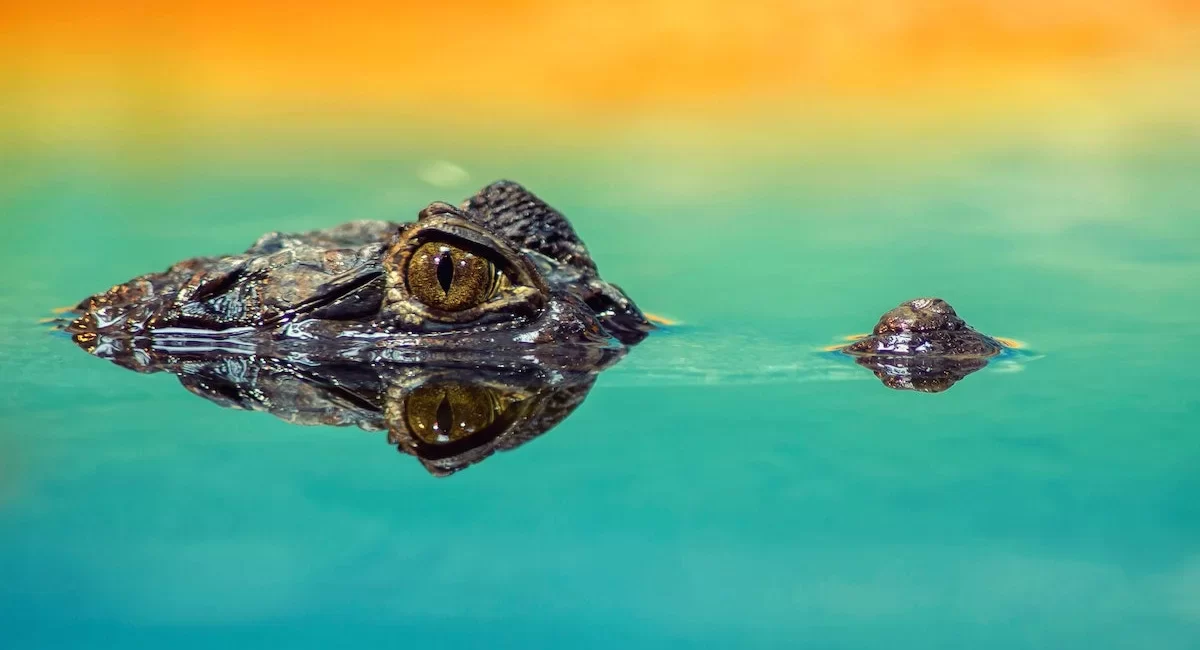
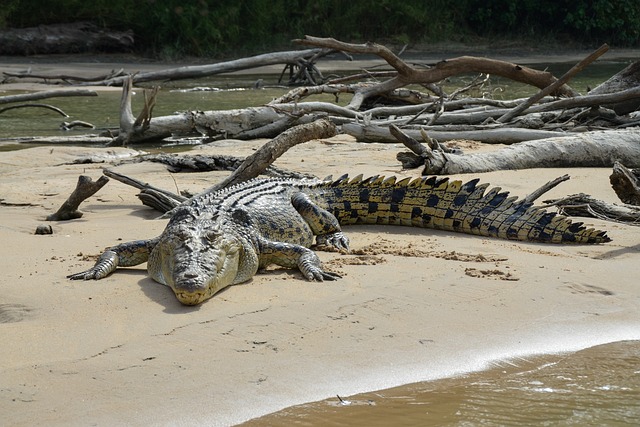
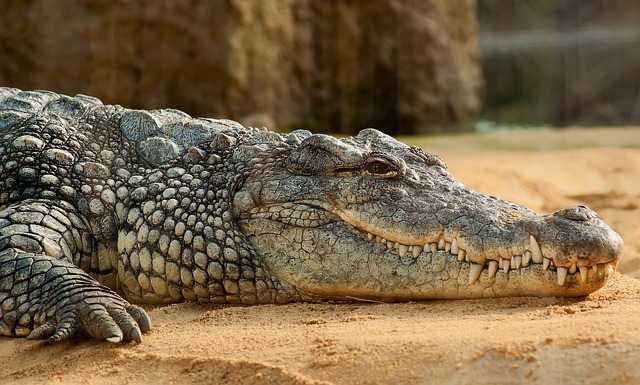



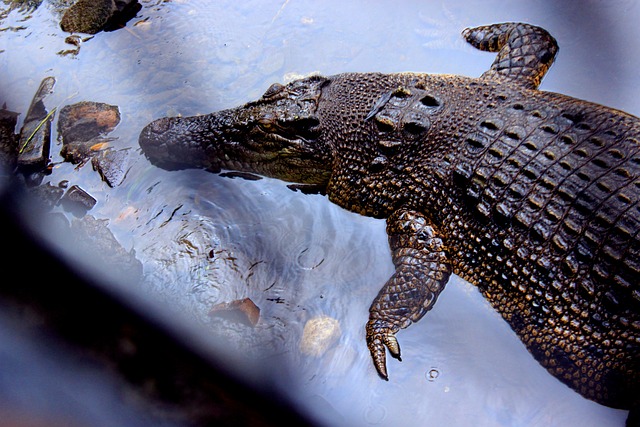


Leave a Comment